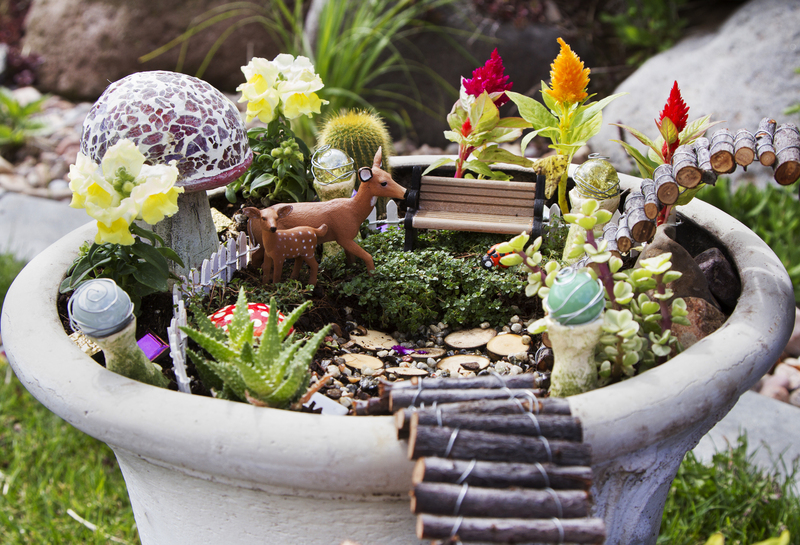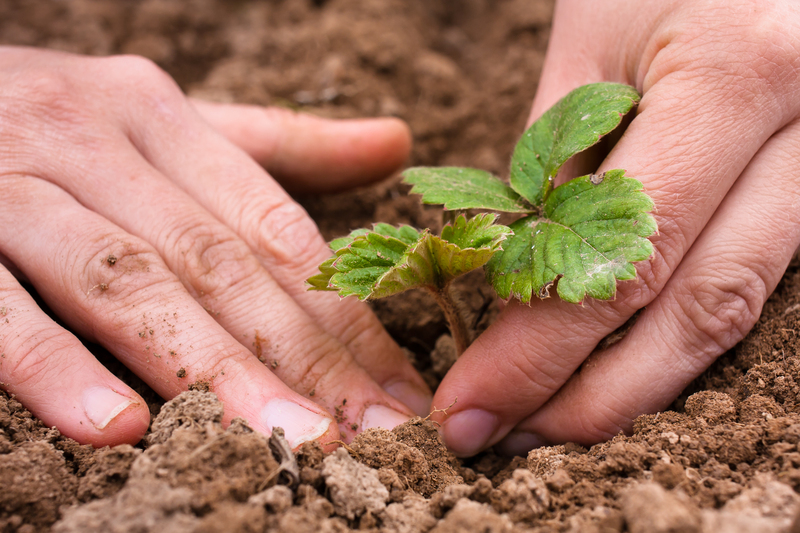Best Watering Practices to Shield Your Lawn from Summer Drought Problems
Summer brings longer days, brilliant sunshine, and--for many lawns--a dreaded enemy: drought. As temperatures soar and rainfall dwindles, lawns can quickly turn brown, patchy, and even die without proper care. To protect your grass and preserve its vibrancy during the hottest months, adopting the best watering practices is essential. This comprehensive guide will introduce you to expert strategies for watering your lawn during summer drought, helping you nurture a resilient, green oasis even in the face of challenging weather.
Why Does Summer Drought Harm Lawns?
A thriving lawn relies on a delicate balance of sunlight, nutrients, and--most importantly--water. During a summer drought, this equilibrium is disrupted. High daytime temperatures and arid winds boost evaporation, causing soils to dry out and grass blades to wither. Added restrictions on outdoor water use in some areas can make matters worse.
Lawn drought stress manifests in several ways:
- Grass blades turning blue-gray or brown.
- Slow growth or halted recovery from footprints and mowing.
- Hard, cracked soil and thinning turf cover.
- If unaddressed, severe root damage and permanent loss of grass.
Understanding these threats is the first step toward robust summer drought lawn protection. The right watering practices can mean the difference between a dormant, struggling yard and a healthy, resilient green space.

Understanding Your Lawn's Water Needs in Hot Weather
Lawn species, soil type, and your local climate all influence how much and how often you should water. In general, most turf grasses require about 1 to 1.5 inches of water per week from rain or irrigation to stay green and vigorous. During severe drought, cool-season grasses may go dormant, while warm-season grasses can tolerate greater dryness.
How to Calculate Watering Requirements
- Soil Type: Sandy soils drain quickly and need more frequent watering; clay soils hold moisture longer, so water less often but more deeply.
- Grass Species: Kentucky bluegrass and fescue are more susceptible to summer drought, while Bermuda and zoysia are more drought-tolerant.
- Sun Exposure: Lawns in full sun need more water compared to shaded areas.
- Local Weather: Higher temperatures and wind increase water evaporation, requiring more frequent irrigation.
Regularly assessing your lawn's specific needs is essential to optimizing water use and minimizing drought damage.
Best Watering Practices to Combat Summer Drought
To help shield your lawn from the pitfalls of summer drought, employ these best watering practices designed for efficacy and water conservation.
1. Water Deeply, but Infrequently
A common mistake is watering lawns lightly every day. This encourages shallow root growth, making grass even more vulnerable to drought. Instead, water deeply and less often--for example, two to three times per week. Deep watering (down to 6-8 inches) promotes strong root systems that better withstand dry periods.
How to ensure deep watering:
- Place an empty can or rain gauge on the lawn and water until it collects 0.5-0.75 inches at each session.
- Wait a few hours, then use a screwdriver or soil probe to test how deeply the water has penetrated.
- If the soil is wet only in the top couple of inches, water longer next time.
2. Water Early in the Morning
The most efficient time to irrigate is between 4 a.m. and 9 a.m. During these hours, temperatures are cooler and winds lighter, reducing evaporation. Avoid watering in the afternoon when the sun is at its peak--much of your effort will be lost to evaporation. Evening watering is less desirable as it can create damp conditions overnight, increasing disease risk.
3. Avoid Overwatering
Too much water is just as harmful as not enough. Overwatering leaches nutrients, encourages fungal diseases, and promotes weak root growth. Watch for signs like standing puddles, mushrooms, or an overly spongy surface. Make adjustments based on weekly rainfall totals and don't water if your lawn is still moist from previous irrigation or rain.
4. Adapt Your Watering to Lawn Variations
Not every section of your yard needs the same amount of water. Slopes, shaded zones, and sunny areas all behave differently. Install moisture sensors, inspect soil with a simple screwdriver, and visually monitor color and texture to target your watering efforts.
5. Use the Right Sprinkler System
- Rotary sprinklers are best for large, open areas--and deliver water at a moderate rate.
- Oscillating sprinklers suit rectangular spaces and produce an even coverage.
- Drip irrigation conserves water by slowly soaking targeted zones, such as garden beds adjacent to lawn.
- Test your system regularly to ensure it's not wasting water through leaks or poor coverage.
6. Let Grass Go Dormant (If Necessary)
Most cool-season grasses can survive summer drought by going dormant: turning brown, ceasing growth, and conserving resources until rainfall resumes. If local water restrictions limit your ability to irrigate properly, water just enough--about 0.5 inches every 2-3 weeks--to keep roots alive. Once rains return, grass will typically recover.
7. Use Mulching Techniques
Return grass clippings to the lawn as you mow. The mulch layer helps retain soil moisture, cools the root zone, and supplies nutrients. Never remove more than the top third of the grass blade at once to avoid stress.
Additional Strategies to Protect Your Lawn from Drought
Comprehensive drought defense isn't just about watering right--it's about creating a resilient root system, optimizing soil health, and applying best practices year-round. Consider implementing these supplemental tactics:
Aerate Your Lawn Annually
- Aeration helps break up compacted soil, allowing water to penetrate deeper and roots to breathe.
- Best performed in spring or early fall; core aeration is most effective.
Choose Drought-Resistant Grass Varieties
- Consider overseeding your lawn with drought-tolerant blends such as tall fescue, Bermuda, or buffalo grass if you live in regions regularly facing summer water shortages.
Maintain Proper Lawn Height
- Keep grass longer in the summer--between 3 and 4 inches. Taller blades shade the soil, reduce evaporation, and promote deeper roots.
Enhance Soil Quality
- Incorporate organic matter such as compost topdressing, which improves soil structure and water retention.
Smart Watering Tools and Technologies
Modern lawn care now includes smart watering systems that help optimize every drop and adapt to changing conditions:
- Soil moisture sensors: These devices monitor water levels at the root zone, preventing over- or under-watering.
- Weather-based controllers: Smart irrigation controllers adjust watering schedules based on forecast and rainfall, eliminating unnecessary watering.
- Rain barrels and catchment systems: Collect and reuse rainwater for your landscape, an eco-friendly solution during drought.
- Drip irrigation kits: Precision watering for areas where grass meets gardens or hardscape.
Water Conservation Tips for Lawn Owners
Drought can strain municipal water supplies. Adopting water-smart habits will not only shield your lawn from drought but also safeguard the environment:
- Follow local water restrictions and ordinances.
- Fix leaks in hoses, spigots, and sprinkler heads promptly to prevent waste.
- Mulch planting beds and garden borders to retain moisture and cool soil near your lawn.
- Group plants by their water needs, so high-demand areas can be prioritized.
- Reduce lawn size in favor of drought-hardy landscaping or native groundcovers, where appropriate.
Common Myths About Watering Lawns During Drought
Myth 1: More frequent, lighter watering is best during heatwaves.
Fact: This approach encourages shallow roots and increases susceptibility to drought.
Myth 2: Evening watering saves water because it's cooler.
Fact: While evaporation is lower, overnight moisture can fuel fungi and disease outbreaks.
Myth 3: If my lawn goes brown, it's dead.
Fact: Most grasses enter dormancy as a protective measure and will recover with rainfall or smart irrigation.
Warning Signs: When Your Lawn Needs More Water
- Footprint Test: Walk across the grass; if your footprints persist instead of springing back, your lawn needs water.
- Color Change: A shift to a dull, bluish-gray hue is a classic sign of thirst.
- Curling Grass Blades: Blades roll or fold inward to conserve moisture.
Paying close attention to these indicators allows for timely action--shielding your lawn from summer drought problems before they take hold.

Frequently Asked Questions about Watering Lawns in Summer
-
How often should I water my lawn during summer drought?
Water deeply two to three times per week, ensuring 1 to 1.5 inches per week total. Adapt based on rainfall and soil retention. -
Is it okay to let my lawn go dormant?
Yes. Most cool-season lawns can go dormant for 4-6 weeks and recover with minimal watering (0.5 inches every 2-3 weeks). -
What's the best time of day to water?
Early morning (4-9 a.m.) ensures efficient use of water and helps reduce disease.
Conclusion: Shielding Your Lawn from Summer Drought Problems
Summer drought can be tough on even the healthiest lawns--but armed with the best watering practices and drought-resilient strategies, you can maintain lush, thriving grass all season long. Prioritize deep, infrequent watering; irrigate early in the day; adapt to soil and shade variations; and employ water-conserving measures both old and new. By understanding your whole landscape and staying alert to signs of stress, you'll shield your lawn from summer drought problems and preserve your green haven--even through the dog days of summer.
Make lawn care a proactive, year-round process, not just a summertime scramble. With patience, knowledge, and the right techniques, your lawn can stay beautiful, conserve water, and survive whatever the weather brings.